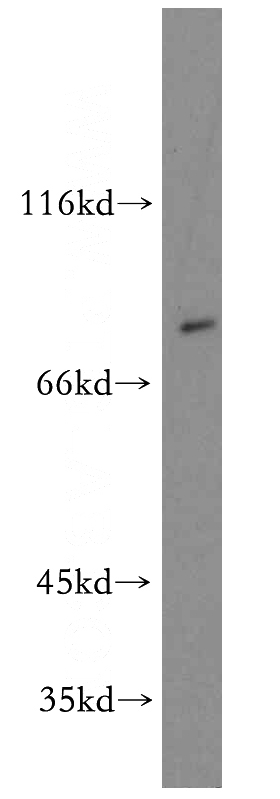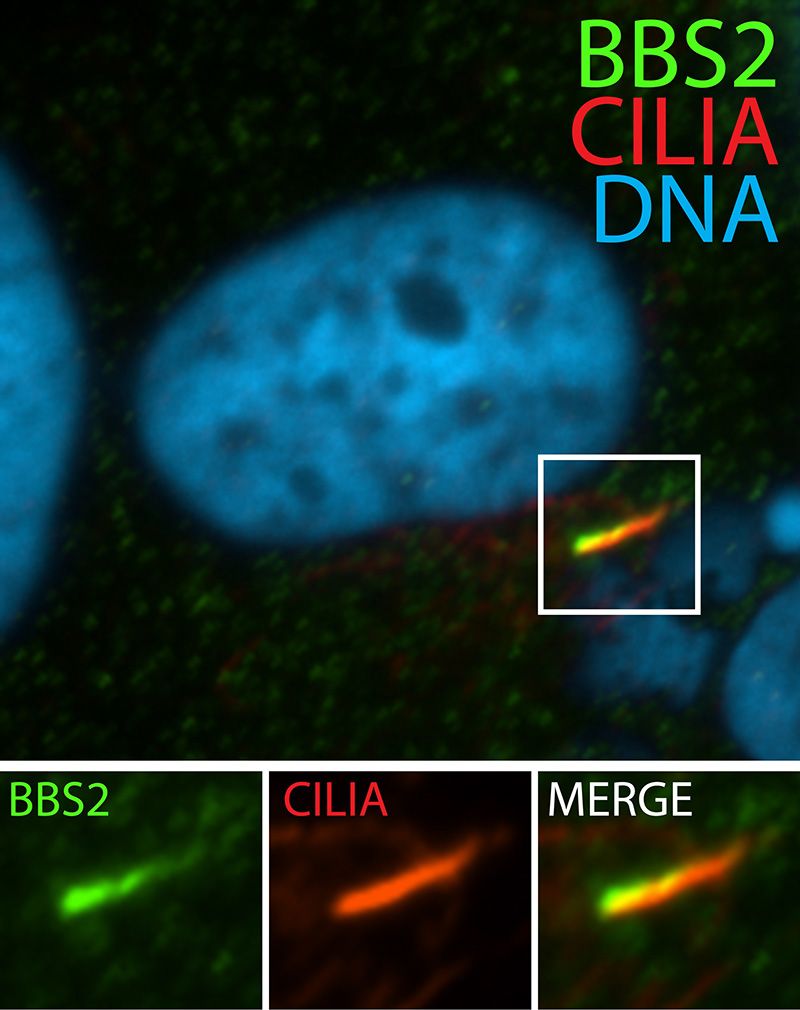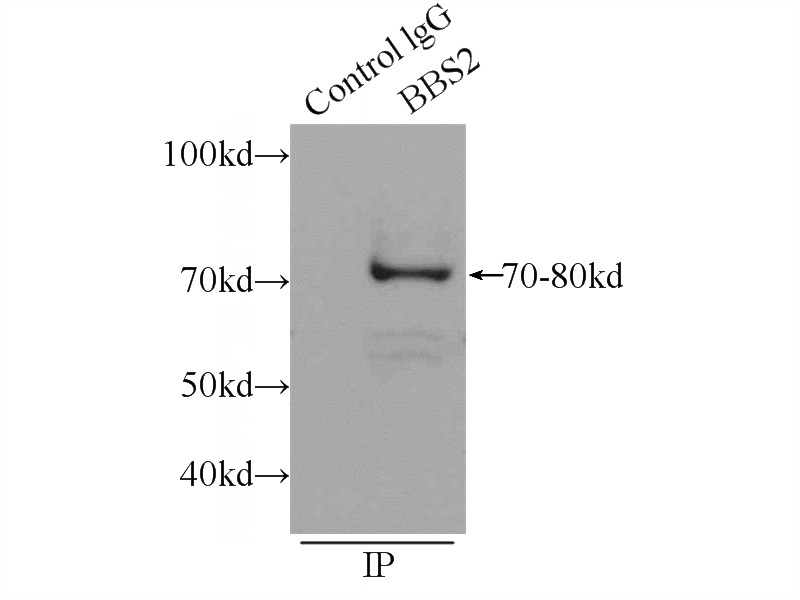-
Product Name
BBS2 antibody
- Documents
-
Description
BBS2 Rabbit Polyclonal antibody. Positive IP detected in mouse liver tissue. Positive WB detected in mouse testis tissue. Positive IF detected in hTERT-RPE1 cells. Observed molecular weight by Western-blot: 80kd
-
Tested applications
ELISA, WB, IF, IP
-
Species reactivity
Human,Mouse,Rat; other species not tested.
-
Alternative names
Bardet Biedl syndrome 2 antibody; BBS antibody; BBS2 antibody
-
Isotype
Rabbit IgG
-
Preparation
This antibody was obtained by immunization of BBS2 recombinant protein (Accession Number: NM_031885). Purification method: Antigen affinity purified.
-
Clonality
Polyclonal
-
Formulation
PBS with 0.1% sodium azide and 50% glycerol pH 7.3.
-
Storage instructions
Store at -20℃. DO NOT ALIQUOT
-
Applications
Recommended Dilution:
WB: 1:200-1:2000
IP: 1:200-1:2000
IF: 1:20-1:200
-
Validations

mouse testis tissue were subjected to SDS PAGE followed by western blot with Catalog No:108369(BBS2 antibody) at dilution of 1:500

IF result (cilia stain) of anti-BBS2 (Catalog No:108369, 1:50) with serum-starved hTERT-RPE1 cells by Dr. Moshe Kim.

IP Result of anti-BBS2 (IP:Catalog No:108369, 5ug; Detection:Catalog No:108369 1:500) with mouse liver tissue lysate 6000ug.
-
Background
BBS2 is one of seven BBS proteins that form the stable core of a protein complex (BBSome complex, 438kd) which is required for ciliogenesis but is dispensable for centriolar satellite function.
-
References
- Jiang ST, Chiou YY, Wang E. Essential role of nephrocystin in photoreceptor intraflagellar transport in mouse. Human molecular genetics. 18(9):1566-77. 2009.
- May-Simera HL, Ross A, Rix S, Forge A, Beales PL, Jagger DJ. Patterns of expression of Bardet-Biedl syndrome proteins in the mammalian cochlea suggest noncentrosomal functions. The Journal of comparative neurology. 514(2):174-88. 2009.
- Jin H, White SR, Shida T. The conserved Bardet-Biedl syndrome proteins assemble a coat that traffics membrane proteins to cilia. Cell. 141(7):1208-19. 2010.
- Heydet D, Chen LX, Larter CZ. A truncating mutation of Alms1 reduces the number of hypothalamic neuronal cilia in obese mice. Developmental neurobiology. 73(1):1-13. 2013.
- Kusek G, Campbell M, Doyle F, Tenenbaum SA, Kiebler M, Temple S. Asymmetric segregation of the double-stranded RNA binding protein Staufen2 during mammalian neural stem cell divisions promotes lineage progression. Cell stem cell. 11(4):505-16. 2012.
- Acs P, Bauer PO, Mayer B. A novel form of ciliopathy underlies hyperphagia and obesity in Ankrd26 knockout mice. Brain structure & function. 220(3):1511-28. 2015.
- Sinha S, Belcastro M, Datta P, Seo S, Sokolov M. Essential role of the chaperonin CCT in rod outer segment biogenesis. Investigative ophthalmology & visual science. 55(6):3775-85. 2014.
Related Products / Services
Please note: All products are "FOR RESEARCH USE ONLY AND ARE NOT INTENDED FOR DIAGNOSTIC OR THERAPEUTIC USE"
